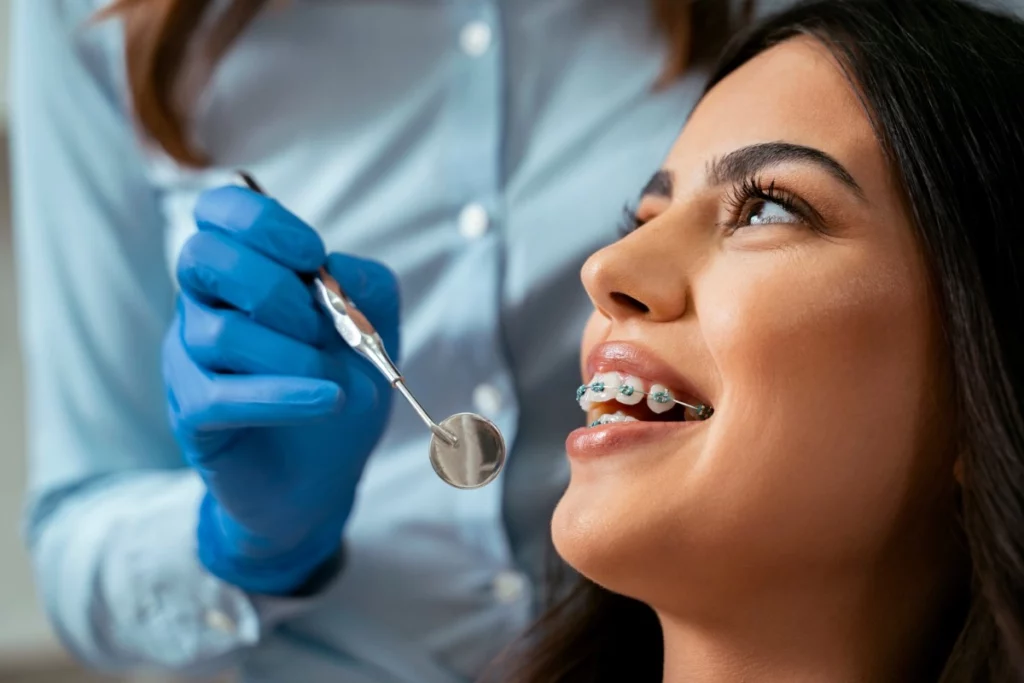Braces (Orthodontia)

Unveiling the Smile Makeover with Dental Braces (Orthodontia)
If you’re considering braces to enhance your smile or correct orthodontic issues, you’ve come to the right place. In this dental education guide, Reagin Family Dentistry provides valuable insights into dental braces and their impact on your oral health and appearance. We cover everything from what to expect during the process, the various types of braces available, and the long-lasting benefits they offer.
For all your orthodontic needs, schedule a consultation with Reagin Family Dentistry.
What Are Braces?
Braces are orthodontic devices used to correct misaligned teeth or jaws. They consist of metal brackets bonded to the teeth and are connected by wires and elastic bands. By applying gentle pressure, braces gradually move the teeth into their desired position, addressing various dental issues such as crooked or crowded teeth, gaps between teeth, overbites, underbites, and crossbites.
Typically, children between the ages of 7 and 14 are ideal candidates for braces, as their facial structures are still developing. However, adults seeking orthodontic treatment may require additional procedures due to their fully developed faces.
Benefits of Dental Braces
Orthodontic treatment with braces extends well beyond achieving a straight smile. The multifaceted benefits encompass both functional and aesthetic aspects, ensuring comprehensive oral well-being.
Here are some of these benefits:
Improved Jaw Alignment
Correction of Crooked or Crowded Teeth
Resolution of Malocclusion (Bad Bite)
Enhanced Chewing and Speaking
Types of Dental Braces
There are several types of braces available, each designed to meet different preferences and requirements. It is important to have a clear understanding of these options in order to make an informed decision about your orthodontic treatment. By familiarizing yourself with the different types of braces, you can ensure that you choose the option that best suits your needs and goals.
Here are some common types of braces:
Traditional Metal Braces
Ceramic Braces
Lingual Braces
The Braces Process
Before beginning the braces process, your dentist will conduct a comprehensive evaluation of your teeth and jaw to determine the most suitable treatment plan for you. This may include taking X-rays, photographs, and impressions of your teeth.
Once a treatment plan has been established, the braces will be applied to your teeth by bonding metal brackets onto them with dental cement. Wires and elastic bands will then be attached to the brackets, which apply gentle pressure to guide your teeth into their desired position.
Periodic adjustments by your dentist are necessary throughout the treatment process to ensure that progress is being made and to make any necessary changes.
Care and maintenance
- Regular Oral Hygiene: Brush and floss after meals to remove food particles and plaque that can cause damage to brackets or teeth.
- Avoid Hard or Sticky Foods: These can damage braces, resulting in longer treatment times. Stick to soft foods and avoid sugary snacks that can lead to plaque buildup.
- Attend Regular Appointments: Regular visits to the orthodontist are crucial for monitoring progress, making adjustments, and ensuring proper maintenance of braces.
Your Trusted Partner in Orthodontic Care
Wondering if braces are right for you? Schedule a consultation with Reagin Family Dentistry to find out! Our experienced team will work with you to determine the best treatment plan for your unique needs, providing you with a beautiful and healthy smile that lasts a lifetime. With the various benefits and options available, dental braces may be the key to achieving your dream smile.
Book an appointment today.
